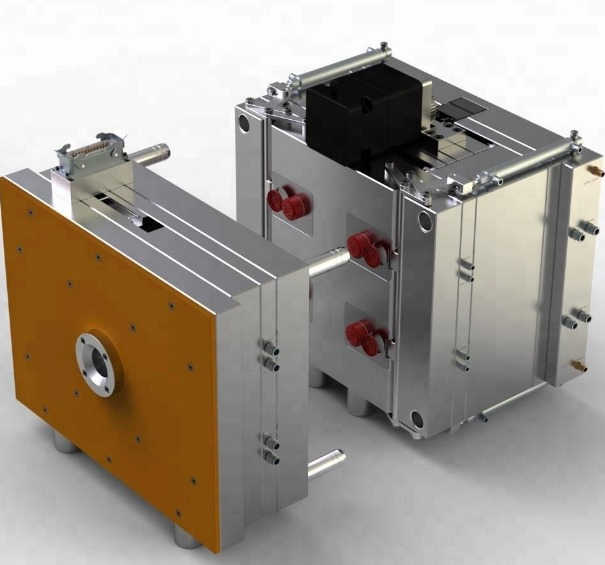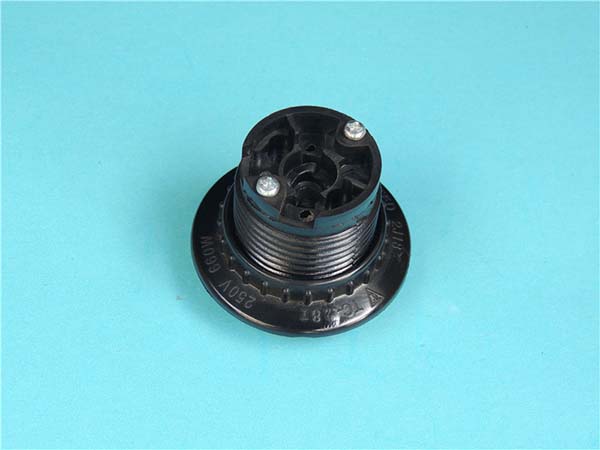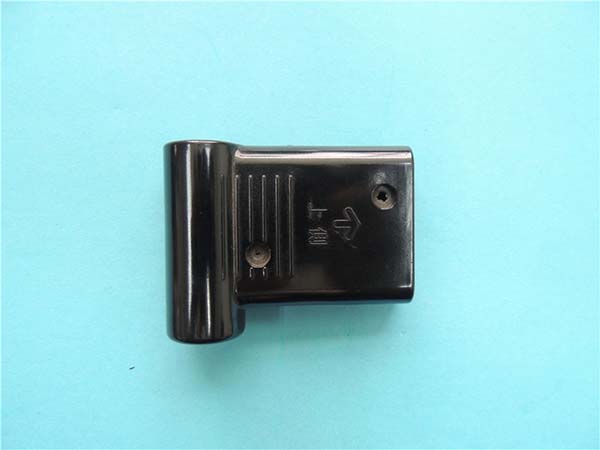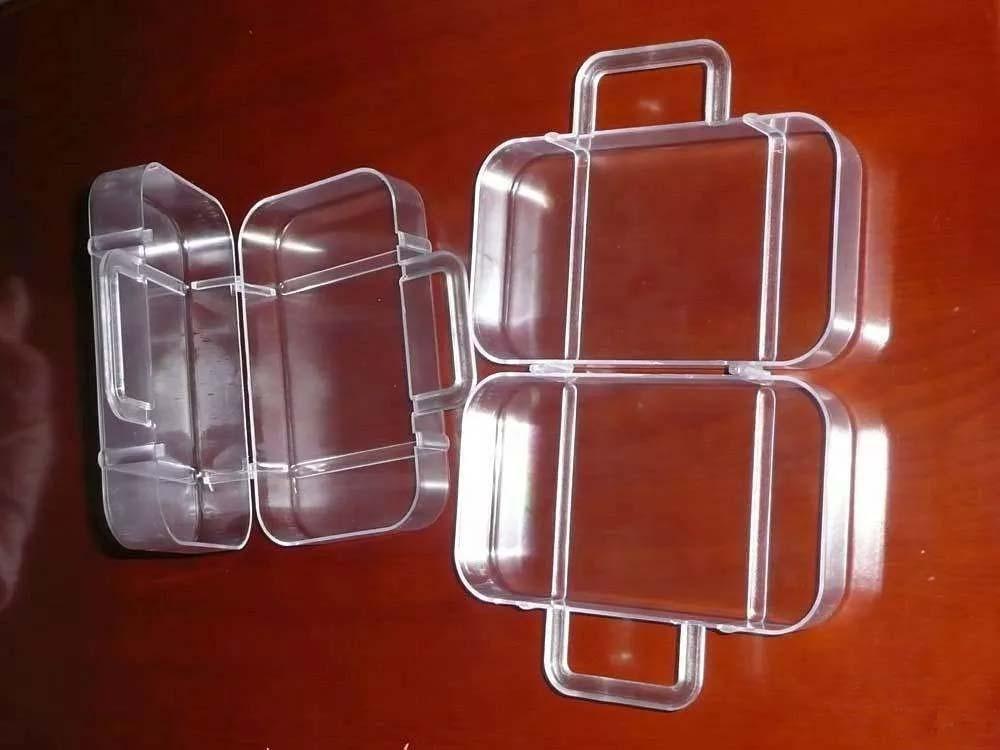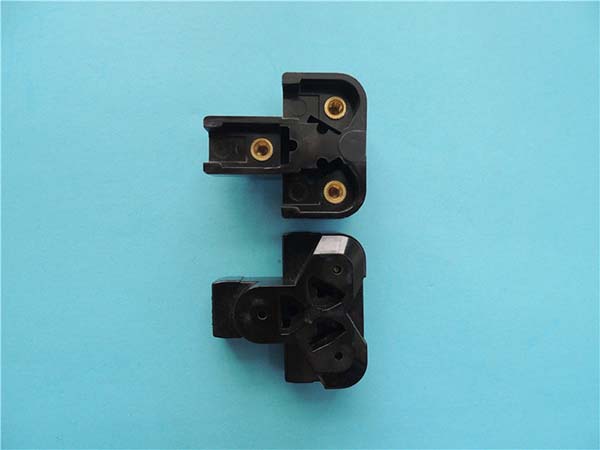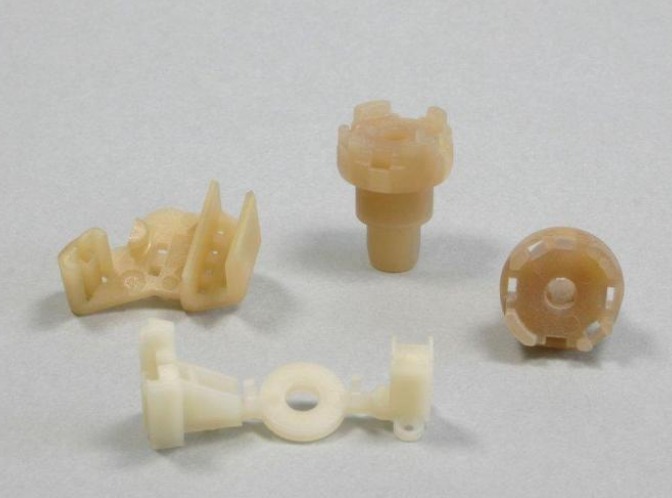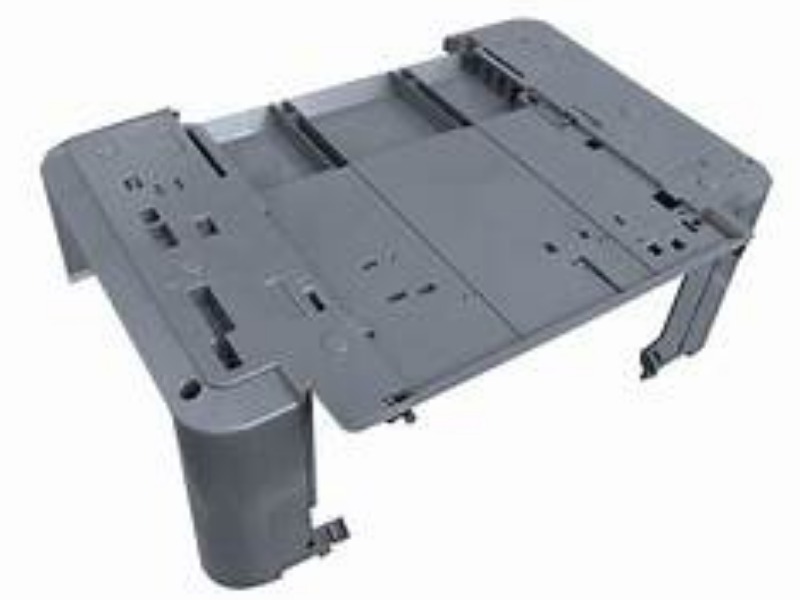Introduction
In the fast - paced world of plastic manufacturing, innovation is the key to staying ahead. One such innovation that has been making waves is the 2 Shot Injection Molding Process. This advanced technique is not just a minor improvement; it's a game - changer, revolutionizing how we think about plastic product design and production.
Understanding the 2 Shot Injection Molding Process
At its core, the 2 Shot Injection Molding Process, also known as two - shot molding or overmolding, is a manufacturing technique that involves injecting two different materials, typically plastics, into a single mold in two distinct steps.
The First Shot:
- First, the base material is injected into the mold cavity. This base material forms the primary structure of the final product. For example, in the production of a toothbrush, the first shot might be a rigid plastic for the handle. The injection molding machine heats the plastic pellets until they reach a molten state. Then, using high pressure, the molten plastic is forced into the mold cavity, which is precisely designed to shape the base part.
- The mold is cooled to solidify the plastic, typically through a water - cooling system integrated within the mold. This solidification process is crucial as it gives the base part its final shape and dimensional stability.
The Second Shot:
- After the first shot has cooled and solidified, the mold rotates or indexes to a new position. This new position aligns the partially - formed part with a second injection unit.
- A different material, often a softer or more flexible plastic, is then injected over the first - shot part. In the toothbrush example, the second shot could be a soft - touch rubber material for the grip area. This second - shot material bonds chemically or mechanically with the first - shot material, creating a single, integrated product with multiple material properties.
In the plastic manufacturing industry, the 2 Shot Injection Molding Process holds a significant position. It allows for the creation of complex, multi - material products in a single manufacturing cycle. This reduces production time compared to traditional methods that might require multiple assembly steps. For Yigu Technology instance, a product that would have taken three separate molding and assembly operations can now be produced in just two shots. According to industry statistics, up to 30% reduction in production time can be achieved for certain product types. Additionally, it enables the production of parts with enhanced functionality, such as improved grip, better aesthetics, and increased durability, which are highly desirable in consumer goods, automotive components, and medical devices.
Key Advantages over Traditional Injection Molding
Enhanced Design Flexibility
Traditional injection molding often limits designers to a single material and a relatively simple design structure. In contrast, the 2 Shot Injection Molding Process unlocks a world of possibilities. With 2 shot molding, manufacturers can create products with complex geometries and multi - material combinations. For example, in the production of consumer electronics, like the outer casing of a high - end wireless earbud case, 2 shot molding allows for a hard, durable outer layer for protection and a soft, rubber - like inner lining to hold the earbuds securely and provide a premium feel. This combination of materials not only enhances the aesthetics but also adds functionality. Another example is in the automotive industry, where parts such as interior door handles can be designed with a rigid plastic core for strength and a soft - touch material on the gripping surface for a more comfortable user experience. This kind of innovative design is difficult, if not impossible, to achieve with traditional injection molding.
Improved Product Performance
The ability to combine different materials in 2 shot injection molding leads to significant improvements in product performance. By strategically choosing materials, manufacturers can enhance properties such as strength, durability, and waterproofness. For Yigu Technology instance, in the production of power tools, the body of the tool can be made from a high - strength engineering plastic in the first shot, and then a layer of impact - resistant rubber is overmolded in the second shot. This rubber layer not only provides a better grip for the user but also absorbs shocks, increasing the tool's lifespan. According to a study by a leading materials research institute, products made using 2 shot injection molding show a 30% increase in impact resistance compared to their single - material counterparts. In terms of waterproofing, products like smartwatch bands can be manufactured with a waterproof rubber material overmolded onto a rigid plastic base, ensuring that the watch remains functional even in wet conditions. This results in a more reliable and long - lasting product for the end - user.
Cost - Efficiency in the Long Run
While the initial setup cost for 2 shot injection molding may be higher due to the need for specialized equipment and 模具 design, it offers long - term cost - savings, especially in large - scale production. One of the main cost - saving aspects is the reduction in assembly steps. In traditional manufacturing, products often require multiple parts to be molded separately and then assembled, which involves additional labor and time. With 2 shot injection molding, multiple parts can be integrated into a single, one - piece product, eliminating the need for complex assembly processes. This not only saves labor costs but also reduces the risk of assembly - related defects.
Moreover, 2 shot injection molding can improve production efficiency. The process allows for faster cycle times as there is no need to move parts between different molding machines or assembly stations. According to industry data, production efficiency can be increased by up to 40% for certain product types. Additionally, the quality control is more straightforward as there are fewer interfaces between parts, leading to a lower 废品率. A comparison of the cost per unit for a production run of 100,000 units between traditional injection molding and 2 shot injection molding is shown in the following table:
| Cost Components | Traditional Injection Molding | 2 Shot Injection Molding |
| Material Cost | $100,000 | $105,000 |
| Labor Cost (Assembly) | $80,000 | $20,000 |
| Tooling Cost | $50,000 | $70,000 |
| Scrap Rate (5%) | $10,000 | $3,000 |
| Total Cost per Unit | $2.4 | $1.98 |
As the table shows, over a large production volume, the 2 shot injection molding process can result in a significant cost reduction per unit, making it a more cost - effective choice in the long term.
Applications across Industries
Automotive Industry
In the automotive industry, the 2 Shot Injection Molding Process has found extensive applications. For interior components, it is used to create parts like steering wheels. A hard plastic is first injected to form the structural framework of the steering wheel, providing the necessary strength to withstand the forces exerted during driving. Then, a soft - touch material, often a type of rubber - like polymer, is overmolded onto the surface. This soft outer layer not only offers a better grip for the driver, enhancing safety, but also improves the overall tactile experience, giving a more luxurious feel.
Exterior components also benefit from this process. For Yigu Technology example, automotive body trims can be made with 2 shot injection molding. A durable, weather - resistant plastic forms the base part, protecting the vehicle body from minor impacts and environmental factors. An additional layer of a plastic with a high - gloss finish is then added in the second shot, enhancing the aesthetics of the vehicle. According to a study by an automotive parts manufacturing research firm, vehicles with 2 shot - molded exterior trims show a 20% increase in customer preference in terms of appearance compared to those with traditional single - material trims.
In the manufacturing of automotive parts, 2 shot injection molding is used for producing complex components such as door latches. The first shot creates a strong, rigid plastic base for the latch mechanism, ensuring reliable operation. The second shot adds a layer of a more impact - resistant material around the critical moving parts. This combination improves the durability of the latch, reducing the risk of failure due to vibrations and minor impacts during the vehicle's lifespan.
Consumer Electronics
Consumer electronics is another industry where the 2 Shot Injection Molding Process has made a significant impact. In the production of mobile phone cases, 2 shot molding allows for a combination of functionality and style. A tough, impact - resistant plastic is injected first to provide protection for the phone from drops and scratches. Then, a layer of a soft, flexible material can be overmolded on the edges or back of the case. This soft layer not only gives a better grip in the hand but also provides additional shock absorption. For example, some high - end phone cases use a polycarbonate base (first shot) for its strength and a thermoplastic elastomer (TPE) overmold (second shot) for the soft - touch feel.
Wireless earbud components also make use of this process. The outer casing of the earbud can be made with a hard plastic in the first shot to protect the internal electronics. A soft, silicone - like material is then overmolded on the part that comes in contact with the ear. This soft material improves comfort during long - term use and also helps to create a better seal in the ear canal, enhancing the audio quality by reducing sound leakage. A market research report indicates that earbuds with 2 shot - molded components have a 15% higher customer satisfaction rate in terms of comfort and durability compared to those made with traditional manufacturing methods.
Medical Devices
In the medical device industry, precision, hygiene, and reliability are of utmost importance, and the 2 Shot Injection Molding Process meets these requirements admirably. For example, in the production of insulin pens, a hard, chemically - resistant plastic is first injected to form the main body of the pen, which houses the insulin cartridge and the injection mechanism. Then, a soft, non - slip material is overmolded on the gripping area. This soft material ensures that patients can hold the pen firmly, even if their hands are unsteady, and also provides a more comfortable user experience during self - injection.
Another example is in the manufacturing of surgical instruments. Some complex surgical forceps are made using 2 shot injection molding. The first shot creates the rigid metal - like plastic structure of the forceps, providing the necessary strength for grasping and manipulating tissues during surgery. The second shot adds a layer of a biocompatible, non - stick material on the gripping surfaces. This non - stick material prevents tissues from adhering to the forceps, reducing trauma to the patient during surgical procedures. The use of 2 shot injection molding in surgical instruments has led to a 30% reduction in the risk of tissue damage during surgeries, according to a study by a leading medical research institution. Additionally, the process allows for the production of smaller and more intricate medical devices, such as micro - catheters, where the combination of different materials can enhance the device's functionality and performance while maintaining strict hygiene and safety standards.
Technical Considerations
Material Compatibility
When choosing materials for 2 Shot injection molding, material compatibility is of utmost importance. The two materials being used must be able to bond well together to ensure a strong and durable final product. One key factor to consider is the chemical compatibility of the materials. For example, polar plastics tend to bond better with other polar plastics, while non - polar plastics have better adhesion with non - polar counterparts.
Another crucial aspect is the difference in shrinkage rates between the two materials. A significant difference in shrinkage can lead to warping, stress concentrations, and even delamination of the two - shot part. As a general rule, materials with similar shrinkage rates, within a range of ±0.2%, are more suitable for 2 shot molding. For instance, a common material combination in consumer electronics is acrylonitrile butadiene styrene (ABS) and polycarbonate (PC). ABS is often used for the first shot due to its good impact resistance and processability, while PC is overmolded in the second shot for its high heat resistance and transparency. These two materials have relatively close shrinkage rates, making them a compatible pair for 2 shot injection molding.
Mold Design Complexities
The mold design for 2 Shot injection molding is significantly more complex than that of traditional injection molding. Mold Structure: The mold needs to be designed in a way that allows for the precise alignment of the first - shot part with the second - shot injection unit. This often involves the use of rotating or indexing mechanisms. For example, a rotary table mold can be used, where the mold rotates 180 degrees after the first shot to position the partially - formed part for the second shot.
Gate Location: Determining the gate location is crucial. For the first shot, the gate should be placed in a way that ensures uniform filling of the base part. In the second shot, the gate location needs to be carefully chosen to ensure that the overmolding material flows evenly over the first - shot part without causing any displacement or distortion. If the gate is too close to the edge of the first - shot part, it can lead to an uneven overmold or even cause the first - shot part to move.
Demolding: The demolding process also poses challenges. Since the two - shot part has a more complex structure, special demolding techniques may be required. Side - action mechanisms, such as slides or lifters, are often used to remove parts with undercuts or complex geometries. Additionally, the use of ejector pins needs to be carefully planned to ensure that the two - shot part is ejected smoothly without damaging the bond between the two materials.
Process Optimization
Optimizing the 2 Shot injection molding process parameters is essential for achieving high - quality products. Temperature: The temperature of the injection units and the mold must be carefully controlled. For the first shot, the barrel temperature should be set to ensure proper melting and flow of the base material. For example, if the base material is a high - temperature engineering plastic like polyetheretherketone (PEEK), the barrel temperature may need to be set as high as 350 - 400°C. In the second shot, the temperature of the overmolding material should be adjusted to ensure good adhesion to the first - shot part without overheating or deforming it.
Pressure: Injection pressure plays a vital role. During the first shot, sufficient pressure is needed to fill the mold cavity completely, but too high a pressure can cause flash or excessive packing. In the second shot, the pressure needs to be adjusted to ensure that the overmolding material adheres well to the first - shot part. A pressure - holding stage is also important to compensate for material shrinkage during cooling. For example, a holding pressure of 30 - 50% of the injection pressure for a duration of 5 - 10 seconds can help in reducing shrinkage and improving the dimensional stability of the final product.
Injection Speed: The injection speed should be optimized to ensure smooth filling of the mold. A too - slow injection speed can lead to incomplete filling or long cycle times, while a too - fast speed can cause air entrapment, jetting, or even damage to the mold. For thin - walled parts, a higher injection speed may be required to ensure quick filling before the plastic starts to cool and solidify. By carefully adjusting these process parameters based on the material properties, mold design, and product requirements, manufacturers can achieve consistent product quality and high production efficiency in 2 Shot injection molding.
Yigu Technology's Perspective
As a non - standard plastic metal products custom Supplier, Yigu Technology highly values the 2 Shot Injection Molding Process. This process aligns perfectly with our commitment to meeting diverse customer demands. It allows us to create unique, customized products with complex designs and multi - material combinations that traditional methods can't match.
For example, when manufacturing custom - designed consumer product components, the 2 shot process enables us to integrate different functions into one part. We can combine a rigid plastic for structural support and a soft, anti - slip material for a better user experience. This not only enhances the product's functionality but also reduces production time and cost by eliminating multiple assembly steps.
In the future, we believe the 2 Shot Injection Molding Process will play an even more significant role in the industry. As technology advances and customer demands for high - quality, customized products grow, this process will be at the forefront of innovation, enabling us to bring more creative and functional products to the market.
FAQ
What are the main differences between 2 Shot Injection Molding and traditional injection molding?
- Process Complexity: In traditional injection molding, only one material is injected into the mold in a single step. In contrast, 2 Shot Injection Molding involves two injection steps with two different materials, often requiring a more complex mold with mechanisms like rotation or indexing to re - position the partially - formed part for the second shot.
- Product Functionality: 2 Shot Injection Molding allows for the creation of products with multiple material properties in a single piece. For example, a product can have a rigid base and a soft, grippy surface. Traditional injection molding is limited to the properties of a single material, so achieving such multi - functionality usually requires additional assembly steps.
- Cost Considerations: The initial investment for 2 Shot Injection Molding equipment and mold design is higher due to its complexity. However, in large - scale production, it can be more cost - effective as it reduces assembly steps. Traditional injection molding has a lower initial setup cost but may have higher long - term costs for products that require multiple parts to be assembled.
Which industries benefit most from 2 Shot Injection Molding Process?
- Automotive Industry: It benefits greatly as 2 shot injection molding is used for manufacturing interior components like steering wheels (combining a rigid structure with a soft - touch grip) and exterior trims (combining durability and aesthetics). This process helps improve the safety, comfort, and appearance of vehicles, which are crucial factors in the automotive market.
- Consumer Electronics: Products such as mobile phone cases and wireless earbud components are made using this process. The ability to combine different materials provides better protection, grip, and comfort for users, enhancing the overall user experience and product competitiveness in this highly competitive industry.
- Medical Devices: Precision and functionality are vital in this industry. 2 shot injection molding is used to create insulin pens with a non - slip grip for easier handling during self - injection and surgical instruments with non - stick surfaces to reduce tissue damage during procedures.
How to ensure the quality of products in 2 Shot Injection Molding?
- Material Selection: Choose materials with good chemical compatibility to ensure strong bonding. Their shrinkage rates should be similar, within ±0.2% if possible, to prevent warping and delamination. For example, ABS and PC are a compatible pair often used in 2 shot molding in the consumer electronics industry.
- Mold Design and Maintenance: Design the mold with proper alignment mechanisms for the two - shot process. Ensure correct gate location to ensure even filling and avoid displacement of the first - shot part during the second shot. Regularly maintain the mold to prevent wear and tear that could affect the product quality, such as checking for any signs of damage to side - action mechanisms or ejector pins.
- Process Parameter Optimization: Carefully control temperature, pressure, and injection speed. Set the barrel temperature according to the material's melting point. Adjust the injection pressure to ensure complete filling without causing defects like flash. Optimize the injection speed to avoid issues such as air entrapment or jetting.
